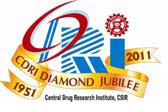About Authors:
D.K Jain*, G.N Darwhekar, Vikas Gupta
College of Pharmacy, IPS Academy
Indore (M.P)-452012, India
*jaindkj57@yahoo.com
Abstract
Convenience of administration and patient compliance are gaining significant importance in the design of dosage forms. Metformin hydrochloride and Glimepiride are orally administered antihyperglycemic agent, used in the management of non-insulin-dependent (type-2) diabetes mellitus. Difficulty in swallowing (dysphagia) is common among all age groups, especially in elderly and pediatrics. Unfortunately, a high percentage of patients suffering from type-2 diabetes are elderly people showing dysphagia. Persons suffering from dysphagia may get choked when they consume liquid formulation, thus to alleviate such problem liquid formulation of high viscosity was prepared. Formulation of oral soft jellies was carried out using combination of hydrophilic polymers guar gum and pectin. 3 different concentrations of guar gum (0.3 to 0.5% w/v) and 2 concentration of pectin were used (0.2 to 0.3% w/v) respectively. The prepared batches were evaluated for appearance, viscosity, pH, drug content, syneresis, in vitro drug release, and taste masking. The batch with 0.5% w/v guar gum and 0.2% pectin not only showed 80% drug release at 60 min, but all the desired organoleptic properties. The taste masking was carried out using non nutritive sugar and flavors. The optimized batch showed substantial stability when subjected to short term stability study (0-8°C and Room temperature). The problem of dose measurement by patients was outweighed as oral medicated gels are to be packed in unit dose container.


 About Authors:
About Authors: CDRI is a pioneer research organization in the field of biomedical research in India. It has the infrastructure and expertise to develop a drug right from the concept stage to the market.
CDRI is a pioneer research organization in the field of biomedical research in India. It has the infrastructure and expertise to develop a drug right from the concept stage to the market.







